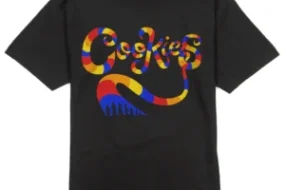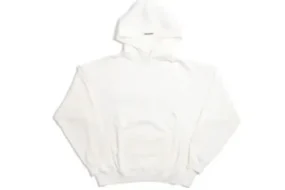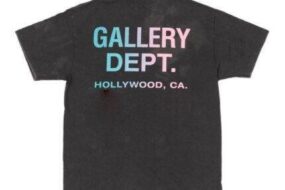
Understanding Modern Fashion Dynamics
Fashion, in its essence, transcends mere clothing choices; it embodies cultural shifts, societal values, and individual expressions. In the contemporary landscape, Visit now Eric Emanuel Shorts modern fashion serves as a powerful medium that influences lifestyles, perceptions, and consumer behaviors globally.
Evolution of Fashions Trends
Over the decades, fashions trends have evolved significantly, reflecting the changing tastes and preferences of society. What began as a functional necessity evolved into a vibrant industry driven by innovation and creativity. The modern fashion industry not only dictates what we wear but also shapes our identities and aspirations.
The Intersection of Art and Commerc
At its core, modern fashions balances artistic expression with commercial viability. Designers blend creativity with market trends to create collections that resonate with diverse audiences. This intersection fuels not only the economy but also cultural dialogues on identity, sustainability, and inclusivity.
Designers: Pioneers of Style
Visionary designers such as Coco Chanel, Gianni Versace, and Alexander McQueen have left an indelible mark on modern fashions. Their innovative designs challenged conventions and set new standards, inspiring generations of creators.
Celebrities and Influencers: Catalysts of Change
In today’s digital age, celebrities and influencers wield significant influence over fashions trends. Their social media presence amplifies trends instantaneously, making styles accessible and desirable to millions worldwide.
The Impact of Technology on Fashion
Technology has revolutionized modern fashions by streamlining production processes, enhancing consumer experiences, and fostering sustainability initiatives. Visit now https://ericemanuelclothing.shop/ Virtual reality (VR) and augmented reality (AR) are reshaping how consumers perceive and engage with fashion brands.
E-commerce Revolution
The advent of e-commerce platforms has democratized fashions consumption, enabling consumers to access global trends at their fingertips. Online retail giants and niche boutiques alike leverage digital platforms to reach diverse demographics and optimize the shopping experience.
Fashion is not static; it evolves continually, influenced by historical events, technological advancements, and cultural shifts. This section traces the historical development of fashion and its artistic milestones.
Cultural Diversity and Representation
Modern fashions celebrates cultural diversity through collaborative collections and campaigns that promote inclusivity. Designers increasingly draw inspiration from global traditions, fostering cross-cultural dialogue and appreciation.
Sustainable Practices
In response to environmental concerns, fashions brands are adopting sustainable practices, from eco-friendly materials to ethical manufacturing processes. Consumers prioritize brands that align with their values, driving industry-wide shifts towards sustainability.
Forecasting Future Trends
Innovations on the Horizon
Looking ahead, modern fashions is poised to embrace technological advancements such as 3D printing and artificial intelligence. These innovations promise to redefine design possibilities and reshape consumer interactions with clothing.
Consumer Empowerment
The future of fashions trends lies in consumer empowerment and personalization. Brands are increasingly offering customizable options and interactive shopping experiences, empowering consumers to express their individuality through style.
Historical Fashions Movements
Throughout history, fashion has undergone significant transformations, each era leaving its indelible mark on the art of clothing. Some notable movements include:
- Renaissance Fashions: Characterized by opulent fabrics and elaborate designs.
- Victorian Era: Known for its strict silhouettes and intricate detailing.
- 1920s Flapper Style: A rebellion against traditional norms, featuring shorter hemlines and looser fits.
Modern Innovations in Fashions
The contemporary fashion scene is marked by innovation and experimentation. Advances in technology have given rise to new materials and techniques, such as:
- Sustainable Fashion: Eco-friendly fabrics and ethical production methods.
- Tech-Infused Fashion: Wearable technology and smart fabrics.
- Digital Fashion: Virtual clothing and augmented reality fashion shows.
Fashion and Social Change
Fashion has often been at the forefront of social movements, serving as a visual symbol of change. Examples include:
- Civil Rights Movement: Clothing as a form of protest and solidarity.
- Feminist Movements: Fashion challenging gender norms and promoting equality.
- LGBTQ+ Rights: Fashion as a medium for expressing identity and advocating for rights.
Economic Influence of the Fashions Industry
The fashion industry is a significant economic force, contributing to employment, trade, and global GDP. Key economic aspects include:
- Fast Fashion vs. Slow Fashion: The economic and environmental impact of production cycles.
- Global Supply Chains: The complexity and reach of fashions manufacturing.
- Consumer Behavior: Trends in purchasing and the shift towards sustainable practices.
Conclusion
Modern fashions is not merely a reflection of style; it is a dynamic force that influences culture, commerce, and consciousness on a global scale. As the industry continues to evolve, embracing innovation and sustainability will be crucial in shaping a future where fashions remains both profound and enduring.










